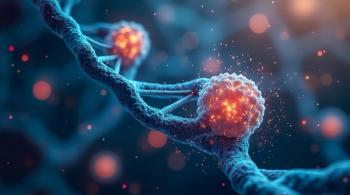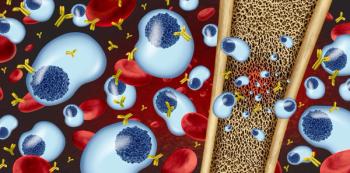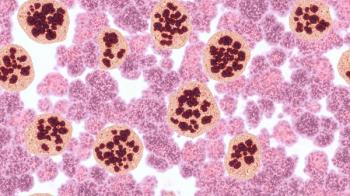
Study Finds HER2-Negative Outperforms HER2-Low in Neoadjuvant Chemotherapy Response in Breast Cancer
Key Takeaways
- HER2-negative status is associated with higher pCR rates than HER2-low in early-stage breast cancer, influencing treatment planning.
- The study analyzed 70,104 patients, showing significant pCR rate differences favoring HER2-negative, especially in HR+ and TNBC subgroups.
Research reveals HER2-negative breast cancer shows higher pCR rates than HER2-low, influencing neoadjuvant chemotherapy strategies for early-stage patients.
A new study finds that HER2-negative (HER2–) status is associated with substantially higher pathological complete response (pCR) rates compared with HER2-low in early-stage breast cancer. The findings, published in Breast Cancer Research, suggest that HER2-zero should be considered a prognostic factor in early-stage breast cancer and considered during neoadjuvant treatment planning.1
HER2 mutations are relatively common in breast cancer, accounting for nearly 20% of all diagnoses and marked by aggressive, recurrent disease. They are classified into specific subtypes: HER2-positive, HER2-negative, and the emerging classifications HER2-low and HER2 ultra-low.2
HER2-low represents about 45% to 60% of all HER2-negative tumors and is associated with resistance to conventional HER2-targeting therapies. Some studies suggest that HER2-low and HER2-negative breast cancers differ in their biology, appearance, and speed of progression. However, it's still unclear how HER2-low status affects response to chemotherapy and survival in early-stage patients. To address this, researchers conducted a systematic review and meta-analysis comparing neoadjuvant chemotherapy responses in patients with HER2-low and HER2-negative breast cancer.1
The researchers assessed 70,104 patients across 38 studies collected from the PubMed, Scopus, and Web of Science databases. Of the population, 61.3% of patients had confirmed HER2-low status and 52.4% had hormone receptor-positive (HR+) status. The analysis focused on differences in pCR, disease-free survival (DFS), and overall survival (OS) between HER2-low and HER2– phenotypes.1
Of the 38 studies, 36 analyzed pCR, representing 67,839 patients. Overall, patients with the HER2– phenotype had a significantly higher pCR rate compared with those with HER2-low tumors (OR, 0.84; 95% CI, 0.78-0.90; P < .000005; I² = 15%). In subgroup analyses, patients with HR+ breast cancer (n = 40,121) showed a stronger association favoring HER2– (OR, 0.75; 95% CI, 0.70-0.81; P < .000001; I² = 0%). Triple-negative breast cancer (TNBC) patients (n = 27,718) also had higher pCR rates in the HER2– group, though the difference was smaller (OR, 0.91; 95% CI, 0.83-1.00; P = .041; I² = 12%).1
Sixteen studies evaluated disease-free survival (DFS). In univariate analyses, no significant benefit was observed for HER2-low in the hormone receptor–positive (HR+) group (HR, 1.005; 95% CI, 0.823-1.226; P = .963), nor for HER2-zero in the triple-negative breast cancer (TNBC) group (HR, 1.209; 95% CI, 0.646-2.259; P = .553). When all patients were analyzed regardless of HR status, HER2-low was still not significantly associated with improved DFS (HR, 0.889; 95% CI, 0.711-1.112; P = .303).1
Multivariate analyses yielded similar findings. Among HR+ patients, HER2-low status did not show a statistically significant advantage (HR, 0.875; 95% CI, 0.745-1.028; P = .104), and no significant difference was found for TNBC patients favoring HER2-zero (HR, 0.947; 95% CI, 0.676-1.326; P = .751). However, when evaluating all patients, HER2-low was associated with a modest but significant improvement in DFS (HR, 0.832; 95% CI, 0.704-0.983; P = .031).1
Seventeen studies reported overall survival (OS) data. In the univariate analyses, HER2-low status was not associated with a significant benefit in HR+ patients (HR, 0.919; 95% CI, 0.751-1.126; P = .416) or in TNBC patients (HR, 0.987; 95% CI, 0.732-1.330; P = .931). Similarly, no significant association was seen across the entire cohort (HR, 0.798; 95% CI, 0.625-1.019; P = .071).1
However, the multivariate OS analysis revealed some distinctions. Among HR+ patients, HER2-low was significantly associated with improved survival (HR, 0.825; 95% CI, 0.779-0.875; P < .001). In contrast, there was still no significant difference in OS for TNBC patients (HR, 0.945; 95% CI, 0.636-1.404; P = .778). Overall, HER2-low status was linked to a significant survival benefit across all patients (HR, 0.806; 95% CI, 0.663–0.979; P = .03).1
The findings show that HER2– status is associated with a significantly higher pathological complete response (pCR) rate compared to HER2-low in early-stage breast cancer. Additionally, multivariate analyses showed significantly favorable OS and DFS rates. These findings may help better guide neoadjuvant chemotherapy decisions and treatment planning.
REFERENCES
1. Aquino de Maraes FC, Duarte de Castro Ribeiro CH, Dircêu Dantas Leite Pessôa F, et al. Pathologic response rates in HER2-low versus HER2-zero early breast cancer patients receiving neoadjuvant therapy: a systematic review and meta-analysis. Breast Cancer Research. March 15, 2025. Doi:10.1186/s13058-025-01989-9
2. Brown J. All about HER2 status in breast cancer. Breast Cancer Research Foundation. Accessed July 17, 2025. https://www.bcrf.org/about-breast-cancer/her2-status-breast-cancer/
Newsletter
Stay informed on drug updates, treatment guidelines, and pharmacy practice trends—subscribe to Pharmacy Times for weekly clinical insights.




















































































































































































































